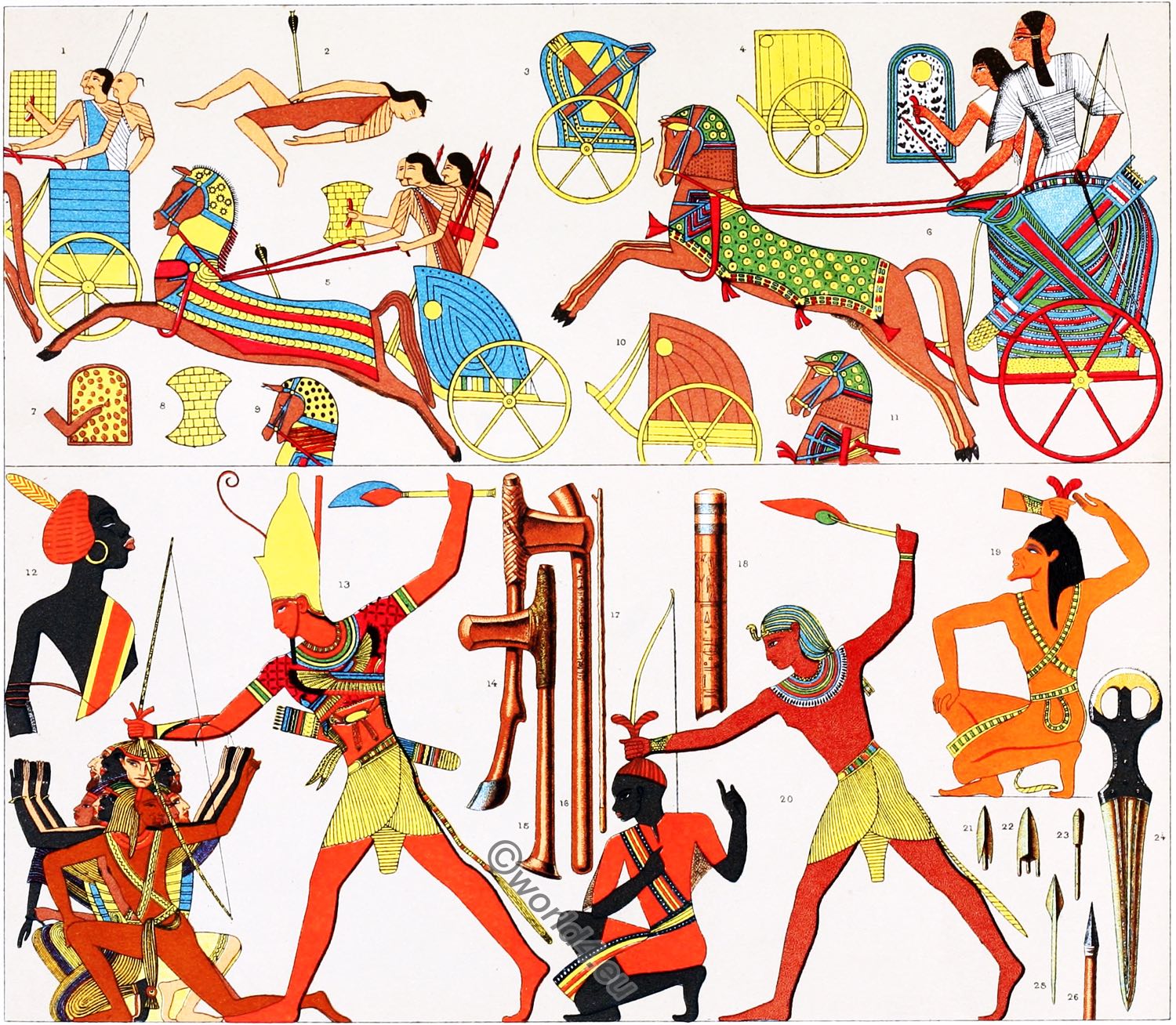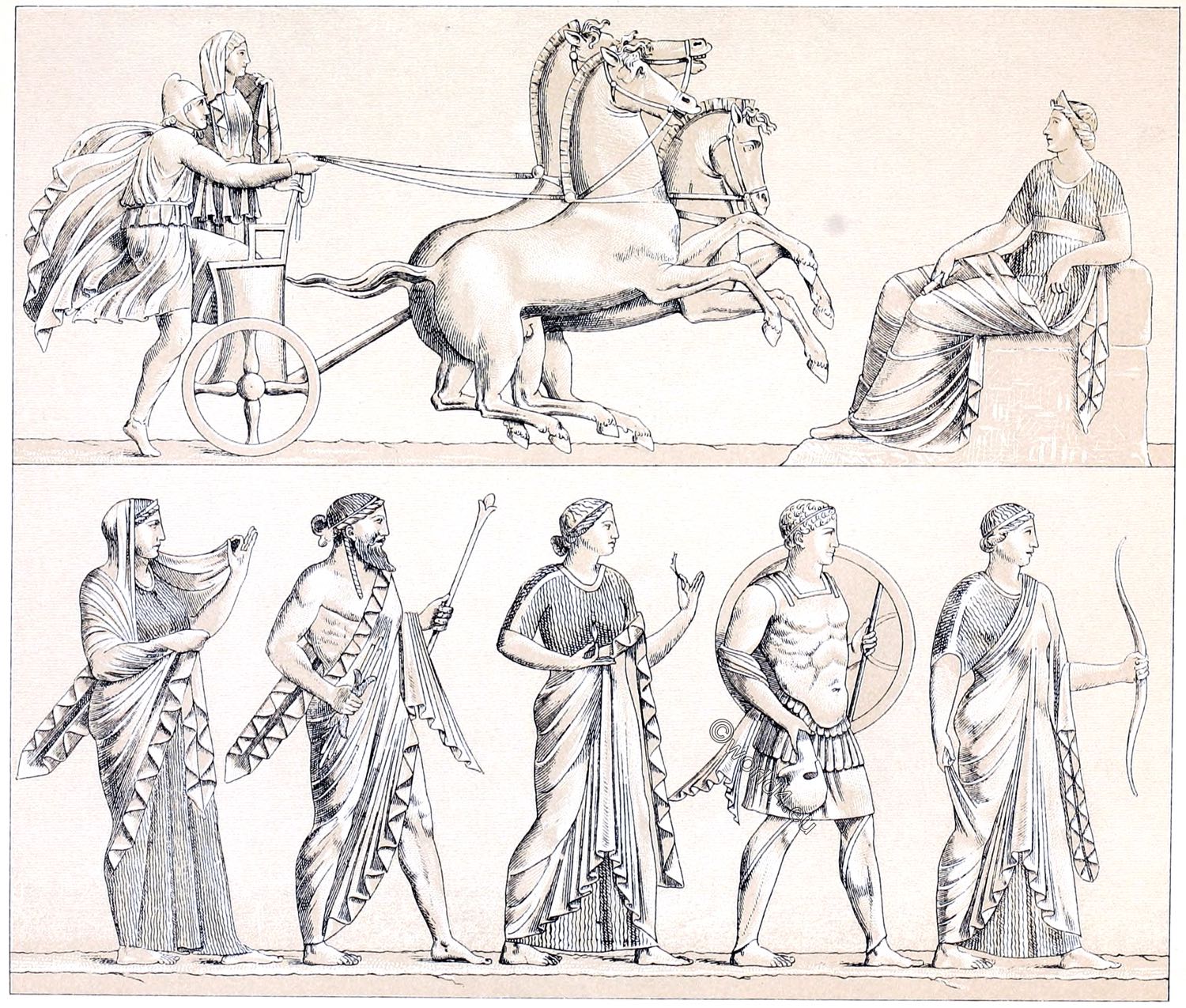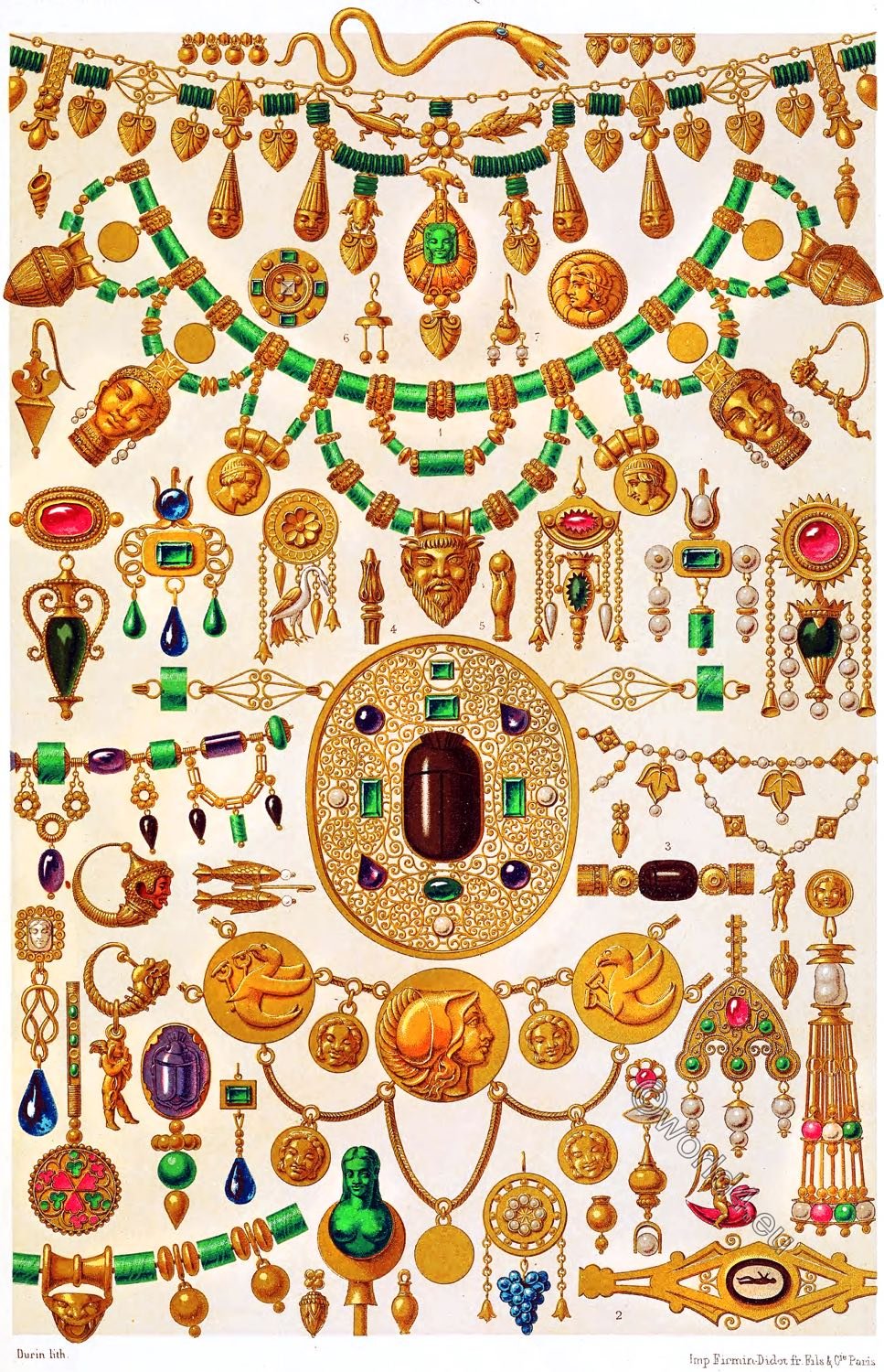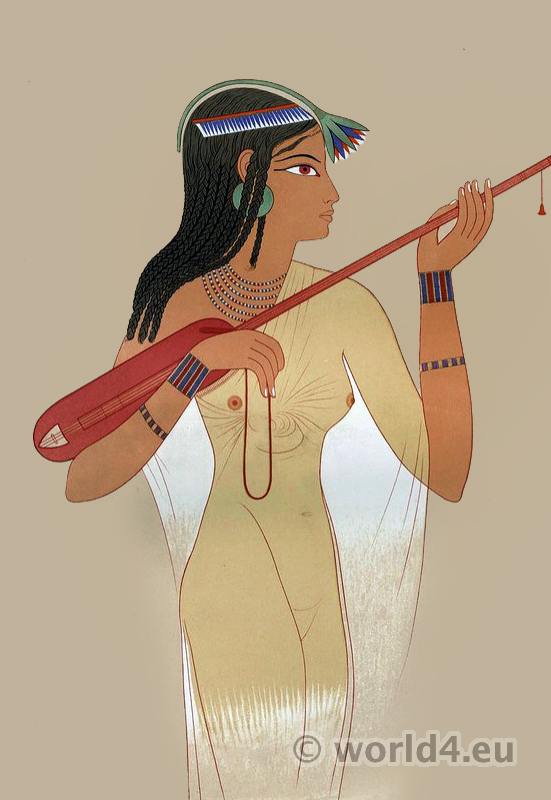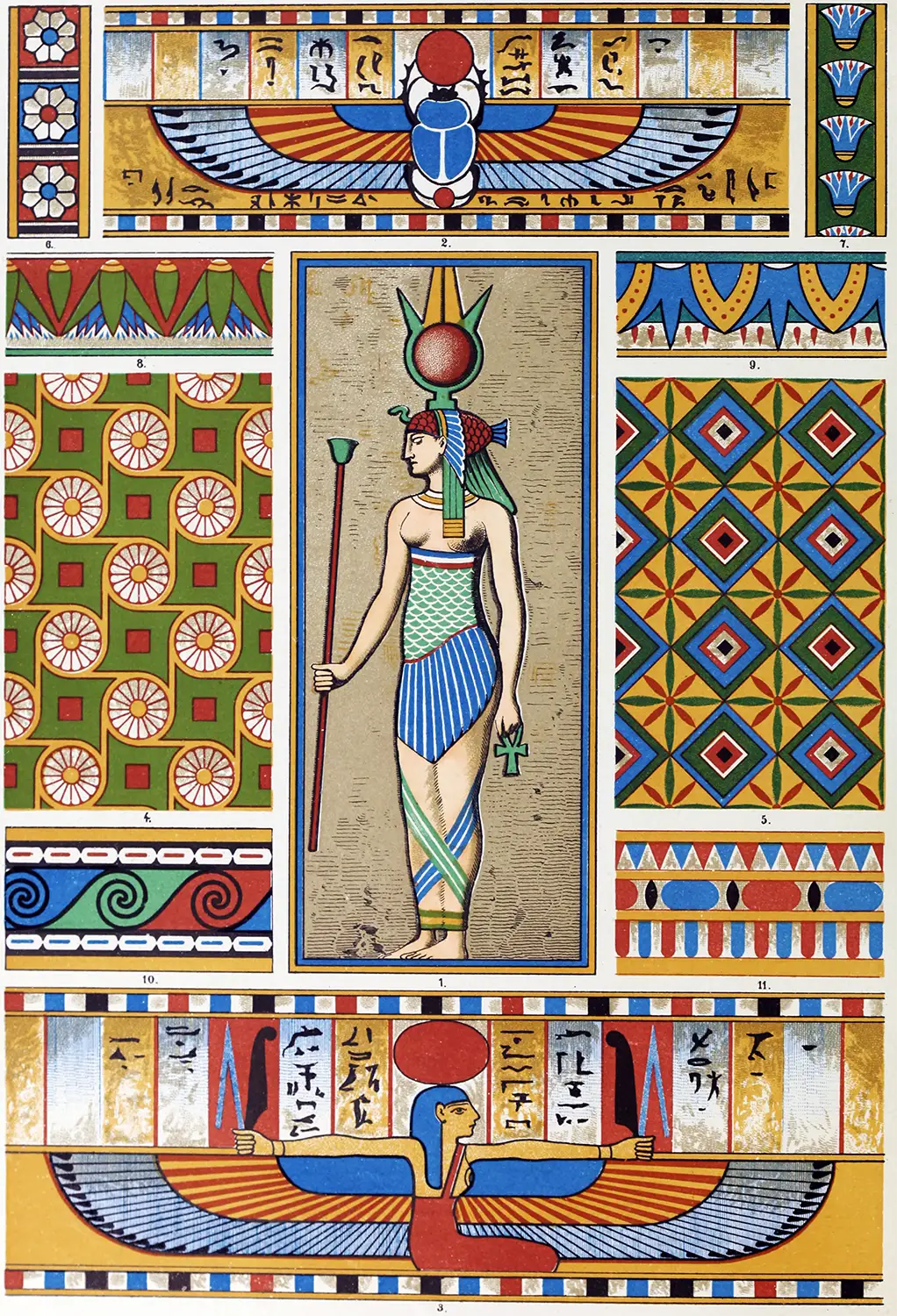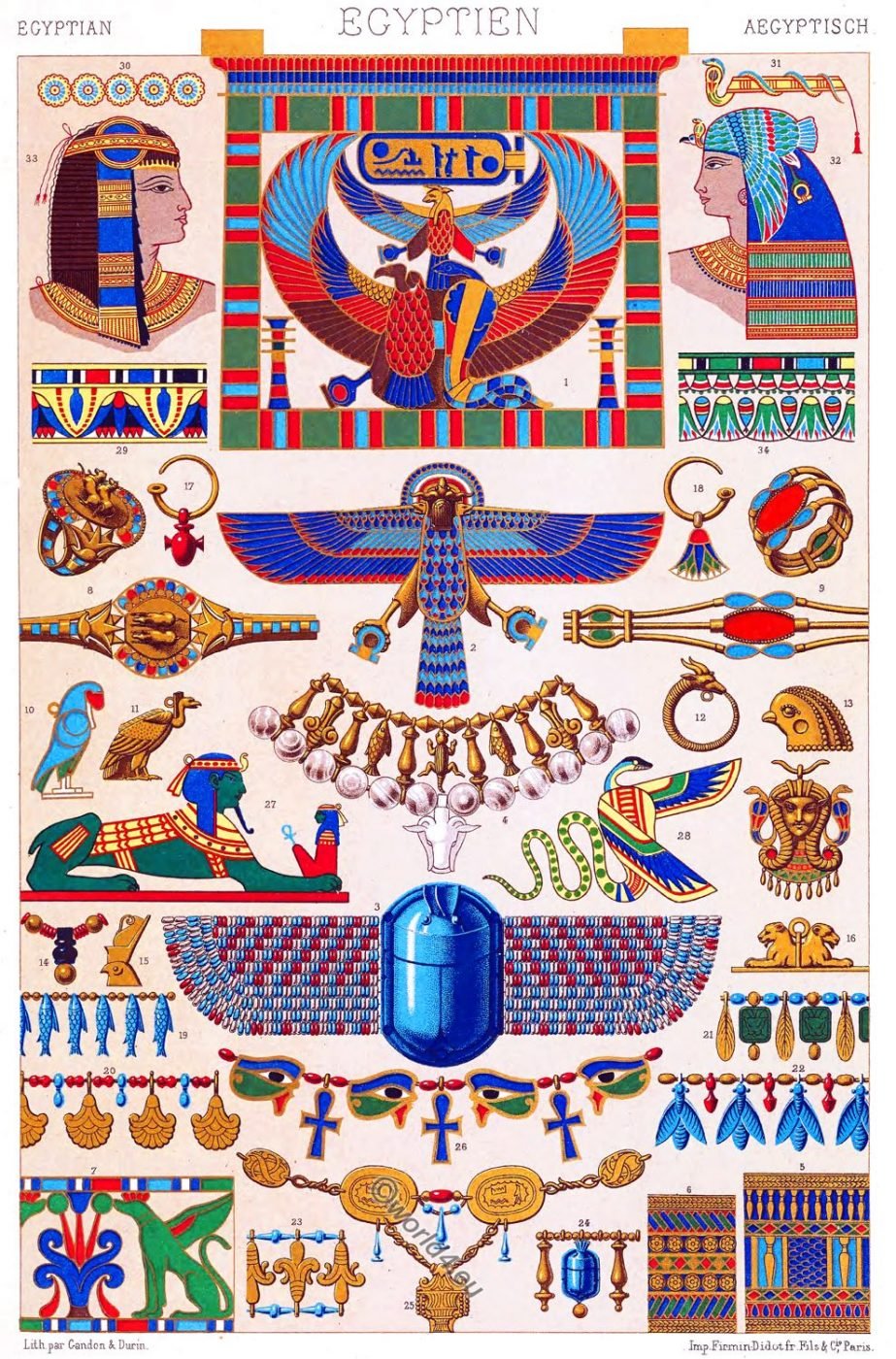
EGYPTIAN ART. JEWELLERY.
Jewelry after paintings at Thebes. Ear-rings, necklaces, amulets, bracelets, rings. Bracelets of cloisonné enamel.
TOMBS, “says M. Auguste Mariette, “sometimes become historical monuments from the variety of articles placed by the side of the dead. In them are often found the objects which form the groundwork of all collections: amulets, statuettes of the gods, jewels, papyri, etc.”
Most of those perfect specimens of Egyptian jewelry which are so invaluable to those in ornamental work have been obtained from the abodes of the dead.
The broad and inflexible character of Egyptian design, so often admirably expressed in metal, is especially suited to the work of the lapidary, and we ought to congratulate ourselves on the custom which required that every dead body should be adorned with at least one necklace.
No. 1. Naos or breastplate of cloisonné enamel, with a tablet below the frieze bearing the name of Rameses II.; XIXth Dynasty. Louvre.
No.2. Framework of gold, filled in with glass. Louvre.
Both these articles are from the Serapeum of Memphis. (The Serapeum is the mausoleum of Apis, Thus the god of the Serapeum, that is to say Serapis, is merely Apis dead. Aug. Mariette.)
No. 3. Scarabaeus of lapis-lazuli with wings of glass beams. (The scarabaeus, among the Egyptians, was the symbol of immortality.)
No. 4. Necklace from the head of Apis.
Nos. 5, 6, 7. Bracelets of cloisonné enamel.
Nos, 8, 9. Rings opened out.
Nos. 10 to 26. Ear-rings, necklaces, and amulets.
No. 27. Sphinx near a stela, composed of the androcephalic lion. (The symbolism of the sphinx has not yet been sufficiently elucidated. According to the Greeks it signified strength, both physical and intellectual.)
Nos. 28 to 33. Jewelry after paintings at Thebes.
From the publication of the French Egyptian Commission and M. Prisse d’Avegnes. (Monuments égyptiens, 4 vols. folio; Paris, Didot.)
Source: Polychromatic ornament by Auguste Racinet. London, H. Sotheran and Co., 1877.
Related
Discover more from World4 Costume Culture History
Subscribe to get the latest posts sent to your email.

